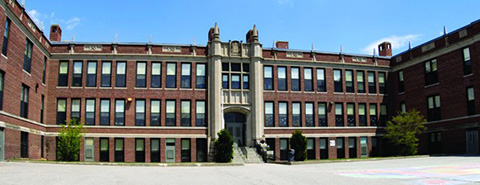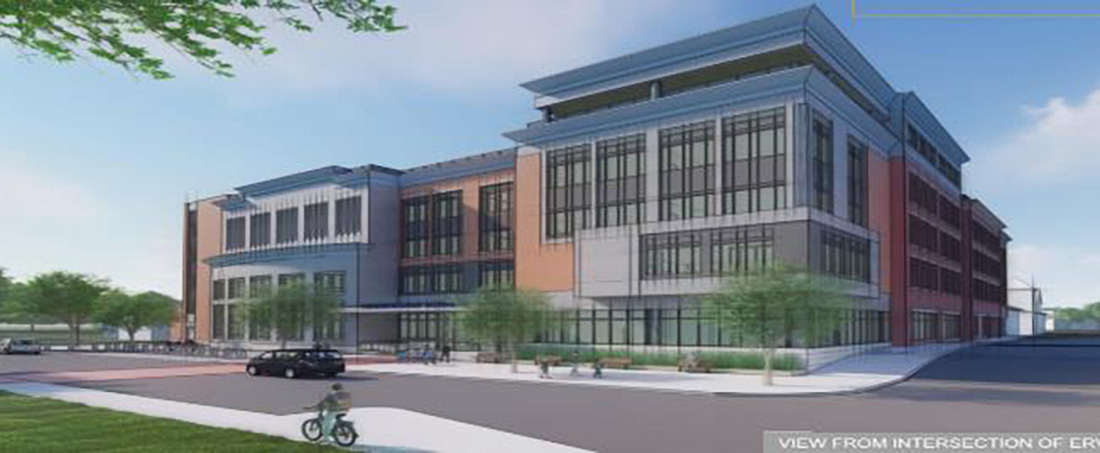
Leahy School Ballot Question and Calculations
By Frank Bonet

As we all know by now, Interim Mayor Kendrys Vasquez order to be placed onto the November ballot a question to increase taxes beyond the maximum of 2.5% for the construction of the Leahy School. That’s maximum of 2.5% is calculated out of your current 2022 budget. But in November (now if you vote early like me) the question to increase your taxes beyond that maximum of 2.5% is being asked of the voters.
A “YES” vote means that the city would increase your taxes above 2.5% (actual number still not told to the voters by your elected city official (or by City Chief Administrator & Financial Officer Mark Ianello) and a “NO” vote will not increase it above the 2.5%.
Most of the residents of Lawrence know that we need newer/updated school buildings for city students. That’s a given. What upset many Lawrence voters is that they know the elected officials, the school superintendent, and CAFO Mark Ianello are playing mind games with this proposed increase. They

are not being transparent with its residents, and many believe that these same people are deceiving voters of the actual nature of the amount, the loans, and using scare tactics to convince you to vote “Yes”. So much for transparency in the Interim Mayor Vasquez administration. But hey, by the book right. Sure.
Let me explain, the City Council did not ask for any information, from Interim Mayor Vasquez and CAFO Mark Ianello for the proposed override, even though both Ianello and Vasquez (including the finance team (which I was a member) knew in early June that an override was needed before the budget went to council. They didn’t even add any increases to this year’s budget because they thought they could hide it from the voters while they were going into these elections. If you want proof of this, all you must do is request (as part of the public records) the City of Lawrence Bond Rating Report, which is dated June 3, 2021.
The Bond Rating Report, specifically states that the administrations told them in early March 2021, that they will have to go for an override of the maximum taxes in November. He primary credit analyst of this report was Danielle L Leonardis of New York and Victor M Medeiros of Boston working for S&P Global.
In the credit rating report, S&P Global indicated Lawrence as “very weak budgetary flexibility”, “Very strong debt and contingent liability profile”, “Weak economy, with a market value per capita of $64,837” and “Adequate budgetary performance, with operating results that we expect could weaken in the near term relative to fiscal 2020”. They also indicated that “were to experience further fiscal pressures” they would reduce the city’s credit rating. Furthermore, insisting that “while we expect Lawrence Massachusetts to have at least balanced operating results, we do not expect results to be as favorable as they had been in 2020.”
I also know for a fact that as of June 2021, the city had received or was expected to receive a total of $7.1 million in CARES Act money, $41.8 million in ARPA money, an additional $10 million from the county and full reimbursement from FEMA for their six submitted projects (which include a vaccination site). The schools were expected to receive an additional $31 million in ESSR money. To continue their conservative budgeting practices, only $2.0 million of ARPA money has been included in the fiscal 2022 budget.
And finally, comments in this June 3rd, 2021 report included “The city plans to issue roughly $130 million for two school projects: the Oliver School and the Leahy School over the near term. The city does not plan to do an over-ride for the Oliver school as debt service declines in fiscal 2028 but will likely require the planned use of a portion of free cash, while the Leahy School will likely require an override, which could go to the voters as early as the Fall of 2021.”
They knew early this year! They knew in March 2021, which is when this audit/credit rating was taking place. They did nothing! No transparency, no communication, no anything to inform the voters this was on its way in November. And then to send Superintendent Paris to take the heat for placing the question on the ballot was the cherry on top of this untransparent and corrupt group of individuals – hence why I left.
On September 23, 2021, Council President LaPlante requested (as part of a council meeting) information from CAFO Ianello regarding how the structure of the Leahy loans would look. On October 3, 2021, CAFO Ianello responded to Council President with some “fuzzy number” calculations. He stated in his memorandum the following.
“The Leahy School Building Project has an estimated cost of $103.7 million, of which the Massachusetts School Building Authority is expected to fund a maximum of 59.08% of the project costs, or $61.3 million. The City of Lawrence will be responsible for the remaining project costs which are estimated at $42.4 million, or 40.92% of the total project costs. Borrowing $42.4M for 20-years will require $3M annually, 25-years will require $2.6M annually, and 30-years will require $3M annually.”
$2.6 million, or $3 million, a year does not sound that bad for a city to pay back the creditors. Or does it? Remember, Lawrence is a redline city, as are other poor communities across the Commonwealth, which means we get loans at high-interest rates. The interest rates were not included in the letter to Council President. Only money amounts and an additional page indicate average estimated increases on property owners. But let’s calculate the amount of the letter as shown in the letter.
- Three million dollars, for 20 years, total $60 million. This means that of a $42.4 million loan, Lawrence will pay $17.6 million in interest alone. That’s 29.4% interest in the life of the loan, and 69% in principal payment.
- $2.6 million, for 25 years, totals $65 million. This means that of a $42.4 million loan, Lawrence will pay $22.6 million in interest alone. That’s 38.5% interest over the life of the loan and 65% in principal payments.
- $3 million, for 30 years, totals $90 million. This means that of a $42.4 million loan, Lawrence will pay $47.6 million in interest alone!!! That is 47.1% interest in the life of the loan, and 53% in principal payments.
Meanwhile, some communities such as Newton, Winchester, or Andover do get to see rates this high. They are not getting redlined by creditors like they do Lawrence. It’s a vicious circle that we are in because we are poor. It’s the equivalent of people with bad credit getting offers for credit cards, but at a 33% interest rate payback and early payoff penalties.
Additionally, CAFO Ianello states (in the $2.3 million levy assessment chart) that the average increase, for single-family homes, will be $101 more per year. Two-family homes and three-family homes will see tax increases of $137 and $156, respectively. But that is not a true statement. Your single-family home may not be assessed as to my single-family home. Your, or my house, may be assessed higher and will pay more taxes. In the same manner that there are no three family homes are assessed alike.
A more detailed report should have been produced – after all they already have all this information in their financial software. They can estimate future or detailed taxes by plugging in the levy percentage or amount. CAFO Ianello can provide detail of every home, business in this city. Now that would be real transparency. But that’s too much work for someone who earns $175,000 per year and doesn’t waste one cent in Lawrence (because he does not live in Lawrence).
To make matters worse, at the end of the year the city council sets a tax rate for the New Year (it’s mandatory for the City to get funds released from the DOR for the second half of its budget). The council may choose a tax rate that further increases your taxes, making the statement by CAFO Ianello a false statement. Hey, this system is made to squeeze as much money from your properties as the Commonwealth can get, and they will create all these laws and rules to get you not to understand. However, if you get to understand it, it’s too late, your taxes, and possibly an override, will have already taken place.
The school department released its own version of the average amount of taxes per home. Let me tell you they were different than what was provided to the council. But what was so brazen in their flyer was that the wanted people in the north side of the city feel like they were receiving less than the south side of Lawrence by placing statements such as; “Provide equitable state of art Science and Technology equipment and labs as well as art and music spaces which are currently available to students attending the Wetherbee, Guilmette, Parthum and South Lawrence East Schools.”
Surely, this information should not be shown as the haves and have nots. Lawrence residents are not at war with one another. But Superintendent Paris is using Comparative Politics. The comparative method is one of four main methodological approaches in the sciences (the others being statistical method, experimental method, and case study method).
The comparative method is important to political science because the other main scientific methodologies are more difficult to employ. This is why I can understand (but not agree) that Superintendent Paris would employ this method to influence voters for the override in taxes. She has no data (or proof) to indicate that the Wetherbee, Guilmette, Parthum, and South Lawrence East educational buildings have a direct positive impact on the learning of Lawrence students. You see MCAS is not used to calculate that, MCAS is only used to calculate a written test taken by the students.
Finally, what CAFO Ianello has not indicated is that he, himself, has stated in early meetings this past summer that the Massachusetts School Building Authority usually won’t pay more than 21% of the school building cost.
He was correct then but why did he change his position? Maybe a little nudge by Interim Mayor Vasquez? There is a formula that is used to calculate estimated reimbursable expenses associated with schools by the MSBA. The MSBA takes a base rate of 31% and adds a socioeconomic factor such as, community income factor (provided by Department of Revenue), Community Property Wealth Factor rate (also provided by DOR), and Community Poverty Factor rate (provided by DESE).
No one in this administration has shown any documents that the MSBA has promised a return reimbursement of 59% of the project. That’s because there is not. I have requested this as a public record, and they don’t have such documents.
These calculations are estimates by CAFO Ianello and school finance officials (possibly the school building committee which is incognito and hasn’t been heard from). The concern, as well as the above concerns, is that the MSBA won’t pay for pieces of the project that is not supposed to be approved by their rules. Reimbursable is the sole discretion of the MSBA.
For further information on reimbursement rate calculation visit MGL 70B section 10. While you are there read the June 2021 bill introduced by state senators to revamp or update said laws.
Happy Voting!


Be the first to comment